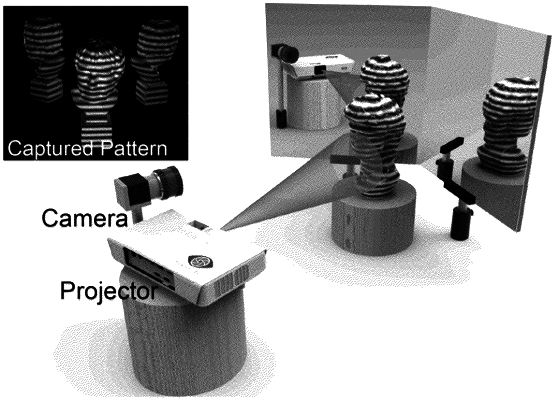| CPC G01B 11/2504 (2013.01) [G01B 11/2513 (2013.01); G01B 11/2527 (2013.01)] | 5 Claims |

|
1. A calibration method for fringe projection systems based on plane mirrors, comprising the steps of:
Step 1: placing two mirrors including a left mirror and a right mirror behind a measured object and using a camera to obtain 360-degree two-dimensional information of the measured object through reflections off the two mirrors;
Step 2: projecting three sets of phase-shifting fringe patterns to the measured object by using a projector, and capturing the projected fringe patterns synchronously with the camera and the two mirrors, wherein an intensity map is obtained for each of the three sets of phase-shifted fringe patterns;
Step 3: calculating wrapped phase maps with different frequencies by using a phase shifting method to obtain three sets of wrapped phase maps, performing phase unwrapping on the obtained three sets of wrapped phase maps, and finally obtaining an absolute phase map by using calibration parameters representing a relationship between each pixel of the projector and each pixel of the camera, and converting the absolute phase map into three-dimensional (3D) information of the measured object;
Step 4: realizing a mirror calibration for each of the two mirrors by capturing a set of 3D feature point pairs so that the 3D information of the measured object is transformed into a unified world coordinate system, so as to achieve high-precision panoramic 3D measurement.
|